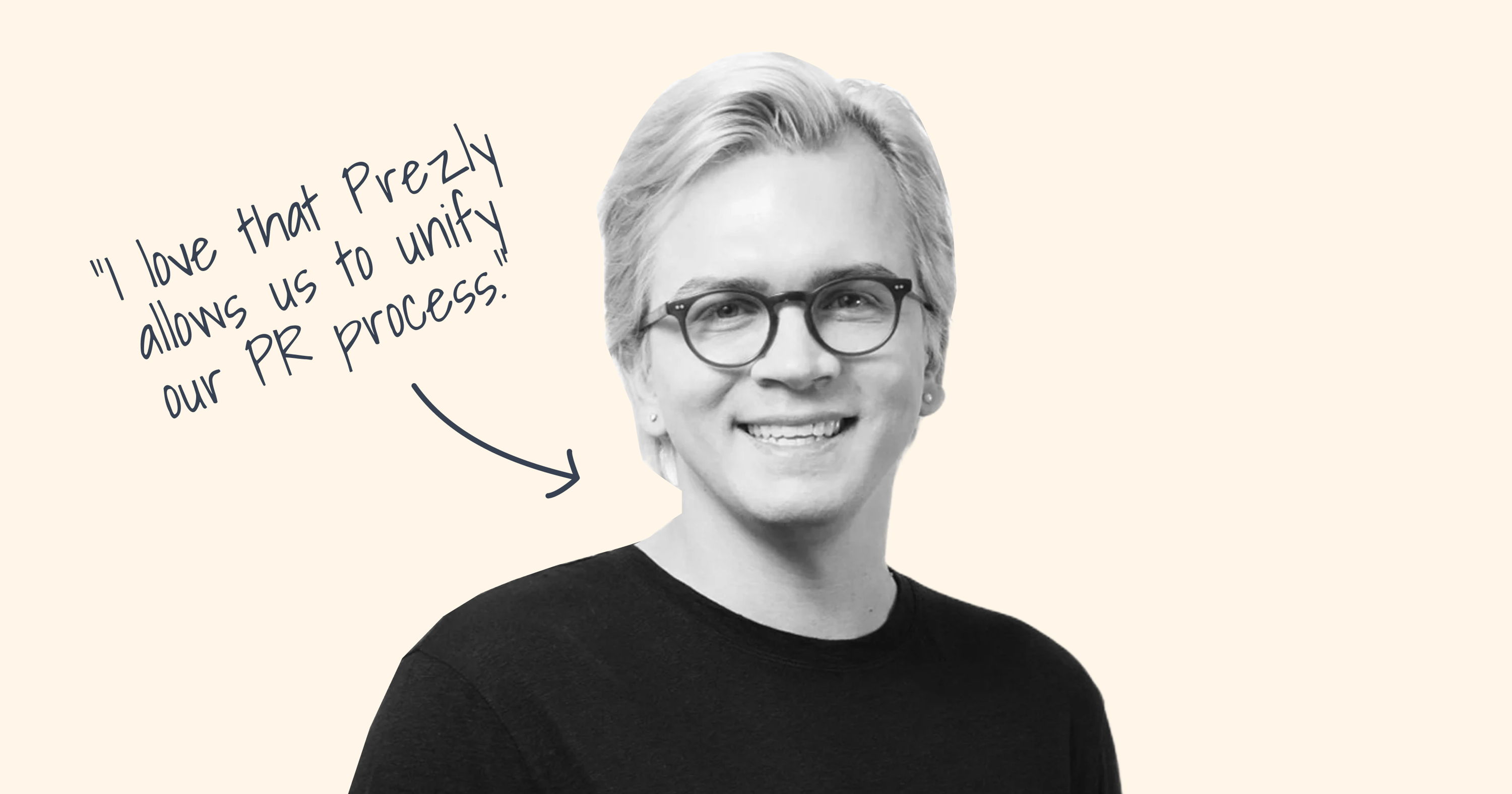skeyes - Building a brand: how one air traffic controller looks beyond press to communicate its values
How can brands control their narrative in a space where the press is only interested in scandals? An interview with skeyes Communications Manager Dominique Dehaene
"A few years ago, we had no proactive communication with the press ... Prezly was one of the main vendors that supported us in proactively informing the press about what we do, all the projects that are running and the business we’re doing. It was a big help for that purpose."
skeyes ensures the safety and efficiency of air traffic 24/7 in one of the busiest and most complex sections of airspace of the continent: Belgium.
With the support of 900 experienced staff members, skeyes' air traffic controllers manage more than 3,000 aircraft every day, totalling over 1 million flight movements each year.
Being at the simultaneous service of airline companies, airports, the aviation sector and the authorities means that comms, both internal and external, must be wielded with considerable finesse.
A tall order for a sector where you really only make the headlines when things go wrong.
"Well, it’s the way of the world. The press is more focused on getting stories that are problematic rather than solutions or positive stories," says Dominique Dehaene.
As Communications Manager, Dominique leads the team responsible for external and internal communication across press, digital and social media, video, graphic design, events, editing and more.
"Unfortunately, we have had some negative news these last few years. We then see that the amount of attention the press pay to that news is way higher."
There's really no sugarcoating it – scandals sell. We all know it, and all we can do is be prepared for when the unexpected hits (something the COVID-19 pandemic is reminding us of all too well). So what was skeyes' solution?
"Proactive communication," says Dominique. "A few years ago, we had no proactive communication with the press. By 'proactive' I mean not just waiting for the press to ask questions about certain subjects, because mostly, these questions come when things go wrong or when there’s negative news to bring.
"Prezly was one of the main vendors that supported us in proactively informing the press about what we do, all the projects that are running and the business we’re doing. It was a big help for that purpose."
"Well, it’s the way of the world. The press is more focused on getting stories that are problematic rather than solutions or positive stories."
But how can brands control their narrative in a space where the press seem more interested in talking about the problems than celebrating successes?
"One thing we do is we try to communicate more directly to stakeholders, to social media and so on. Because we know in the press, you don’t control what the press is writing, even if there’s positive news – for example, we had some negative press around social turmoil, but it had a positive outcome in that we concluded deals with the unions. But once the problems are solved, the press pays less attention to the topic. However good a tool Prezly is, you cannot change the way the press works.
"So you need to make the checks and balances; it will be rather on the negative side if you look only at press attention. But I think overall, if you take account for social media and what your actual stakeholders are saying, that will be a totally different story."
"We do still communicate our positive news to the press through Prezly – if you look at our newsroom, it builds a narrative of all our updates. So at least we keep the press informed of the good we're doing, even if they don’t write articles about it or they don’t show footage on TV or we don’t get radio attention with it. At least the press is aware of the positive initiatives that are taken here as well.
"So, it doesn’t always have to result in physical coverage. Prezly is, for us, a means to tell the press about what we’re doing and to demonstrate who we are as a brand."
One effective way to build that authentic brand narrative is to share news of the other projects the business is running under the hood, even if the team knows it isn't going to be front-page news.
"In all our communication, we stress our societal role. Of course, our first priority is always the safety of air traffic, and it’s our core business, and we also attach a lot of importance to innovation, like with our drones collaborations and digital towers, et cetera. But our societal role within the communities around the airports are also crucial here. We actually make sure to address those residents directly, through our website [www.batc.be]."
"Prezly is, for us, a means to tell the press about what we’re doing and to demonstrate who we are as a brand."
Some of the stories skeyes proactively reach out to the press about? The often controversial topic of drone traffic.
"We're totally in favour of drones, but of course, our job is to integrate safely, to keep the airspace above Belgium and around our airports safe," explains Dominique.
"So, instead of waiting for the sector to develop itself and being confronted with the negative aspects of it, we, from the beginning, collaborated with the sector and listened to them, and listened to what they would need and which role we could play so that we could integrate drone traffic into classic air traffic."
It sounds like a simple approach, but this proactivity and collaboration has led to skeyes becoming a forerunner in the conversation surrounding drone air traffic.
"We also talk about the measures we take to reduce our environmental impact. For example, windmills are an important possible solution for creating renewable energy, but they can intervene with our radars, and of course our priority is to safeguard the air traffic. So we're looking into all possible solutions that would enable the construction of more windmills without them interfering with our technical installations, trying to remove this obstacle standing in the way of further windmill construction. We are constantly looking for these sorts of solutions and communicating about our efforts."
Building an authentic brand is tough, necessitating constant communication of your activities, beliefs and ideas – a task that can feel thankless when it more often than not results in precisely zero press coverage. But brand isn't measured in press clippings.
Being open and consistent with your actual stakeholders is what, at the end of the day, will matter most and set apart the brands that stand for something from those only out to make a quick buck.
Never underestimate the power of community; Dominique certainly doesn't.
"The challenges were great when I started here, mainly around press coverage and maintaining those contacts with the press," says Dominique. "We’ve made enormous progress as a brand and in our PR. There’s still a long way to go, but we’ve come far as well. We’re doing fine."
Find out how Prezly can help you take your PR to new heights with a free trial ✈️


